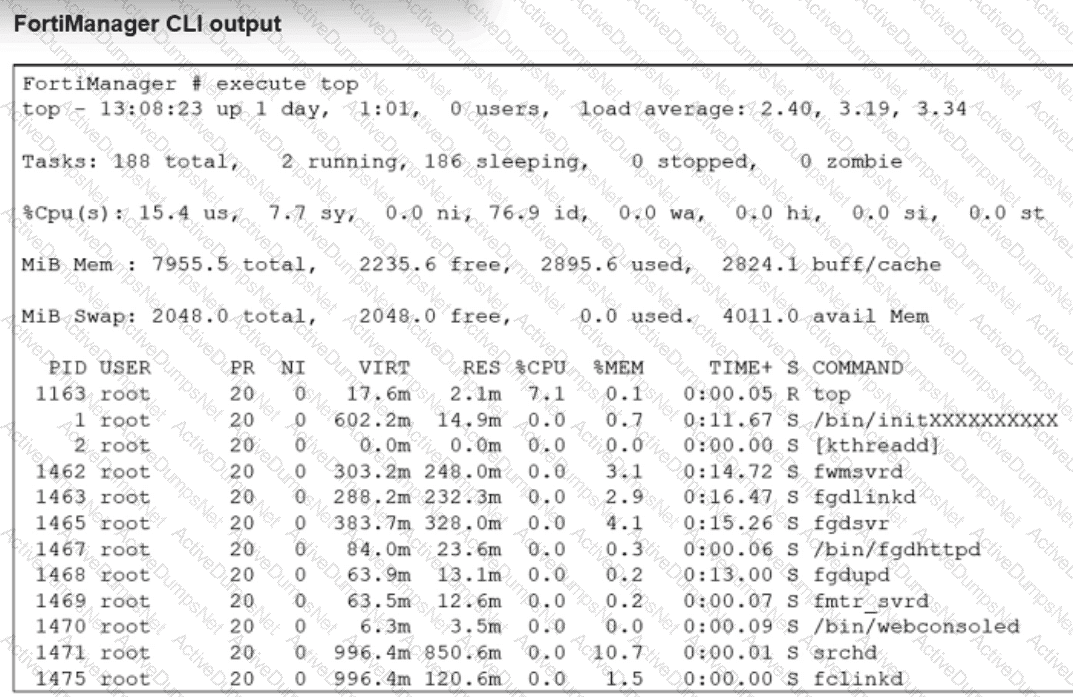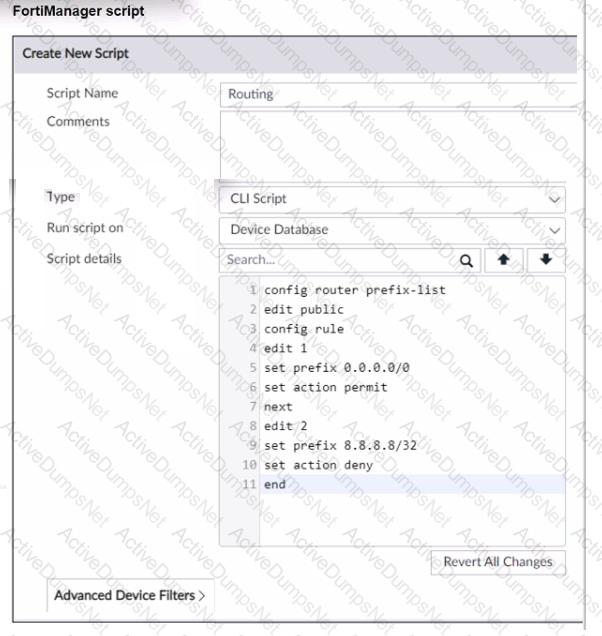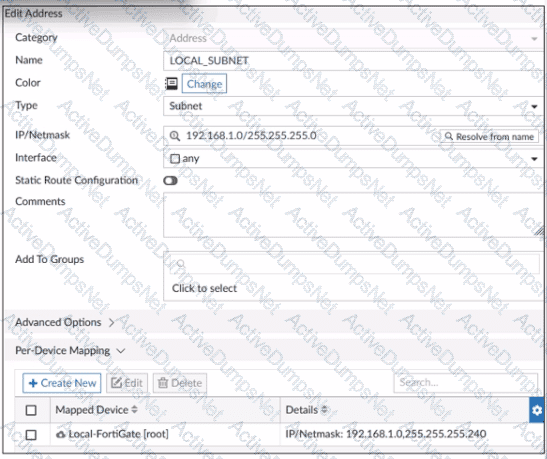Fortinet FCP_FMG_AD-7.4 FCP - FortiManager 7.4 Administrator Exam Practice Test
FCP - FortiManager 7.4 Administrator Questions and Answers
An administrator runs the reload failure command diagnose test deploymanager reloadconf
What does this command do?
What is the purpose of ADOM revisions?
Which two conditions trigger FortiManager to create a new revision history? (Choose two.)
Refer to the exhibit.

A junior administrator is troubleshooting a FortiManager connectivity issue that is occurring with a managed FortiGate device.
Given the FortiManager device manager settings shown in the exhibit, what can you conclude from this scenario?
Which statement about the upgrade of ADOMs on FortiManager is true?
Which API method is used to create objects or overwrite existing ones?
An administrator wants to create a policy on an ADOM that is in backup mode and install it on a FortiGate device in the same ADOM. How can the administrator perform this task?
Which two items are included in the FortiManager backup? (Choose two.)
When using the FortiManager JSON API, what is the purpose of the session ID received after successful authentication?
What does a policy package status of Never Installed indicate?
An administrator, Trainer, who is assigned the Super_User profile, is trying to approve a workflow session that was submitted by another administrator, Student. However, Trainer is unable to approve the workflow session.
What can prevent an admin account that has Super_User rights over the device from approving a workflow session?
Refer to the exhibit.

What percent of the available RAM is being used by the process in charge of downloading the web and email filter databases from the public FortiGuard servers?
Refer to the exhibit.

Which two results occur if the script is run using the Device Database option? (Choose two.)
Refer to the exhibit.

An administrator has created a firewall address object that is used in multiple policy packages for multiple FortiGate devices in an ADOM.
After the installation operation is performed, which IP/netmask is shown on FortiManager for this firewall address object for devices without a Per-Device Mapping set?
Which output is displayed right after moving the ISFW device from one ADOM to another?
A)

B)

C)

D)

An administrator configures a new OSPF area on FortiManager and has not yet pushed the changes to the managed FortiGate device. In which database will the configuration be saved?
Which two statements about the integrity of databases on FortiManager are correct? (Choose two.)
An administrator has assigned a global policy package to a new ADOM called ADOM1.
What will happen if the administrator tries to create a new policy package in ADOM1?
